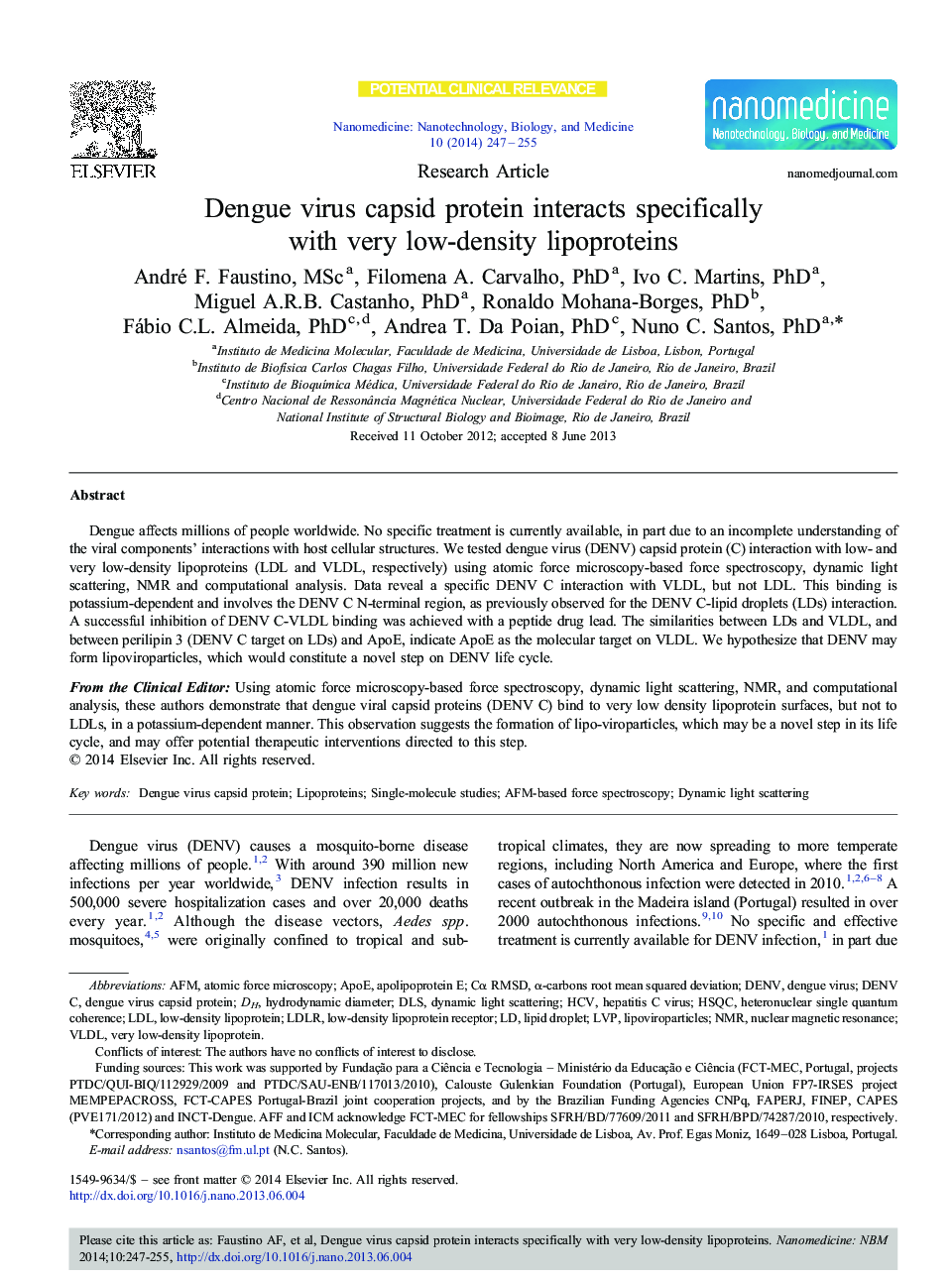| کد مقاله | کد نشریه | سال انتشار | مقاله انگلیسی | نسخه تمام متن |
|---|---|---|---|---|
| 877486 | 911029 | 2014 | 9 صفحه PDF | دانلود رایگان |
Dengue affects millions of people worldwide. No specific treatment is currently available, in part due to an incomplete understanding of the viral components' interactions with host cellular structures. We tested dengue virus (DENV) capsid protein (C) interaction with low- and very low-density lipoproteins (LDL and VLDL, respectively) using atomic force microscopy-based force spectroscopy, dynamic light scattering, NMR and computational analysis. Data reveal a specific DENV C interaction with VLDL, but not LDL. This binding is potassium-dependent and involves the DENV C N-terminal region, as previously observed for the DENV C-lipid droplets (LDs) interaction. A successful inhibition of DENV C-VLDL binding was achieved with a peptide drug lead. The similarities between LDs and VLDL, and between perilipin 3 (DENV C target on LDs) and ApoE, indicate ApoE as the molecular target on VLDL. We hypothesize that DENV may form lipoviroparticles, which would constitute a novel step on DENV life cycle.From the Clinical EditorUsing atomic force microscopy-based force spectroscopy, dynamic light scattering, NMR, and computational analysis, these authors demonstrate that dengue viral capsid proteins (DENV C) bind to very low density lipoprotein surfaces, but not to LDLs, in a potassium-dependent manner. This observation suggests the formation of lipo-viroparticles, which may be a novel step in its life cycle, and may offer potential therapeutic interventions directed to this step.
Graphical AbstractCatching a ride: Dengue virus (DENV) capsid protein binds specifically to human plasma VLDL, but not to LDL, by taking advantage of the intracellular high K+ concentration. The possible formation of lipoviroparticles could be the perfect shuttle for new viruses to the extracellular environment and, eventually, to a new target cell, suggesting a novel step on the unsolved DENV replication cycle.Figure optionsDownload high-quality image (191 K)Download as PowerPoint slide
Journal: Nanomedicine: Nanotechnology, Biology and Medicine - Volume 10, Issue 1, January 2014, Pages 247–255
